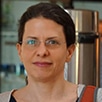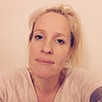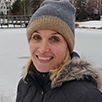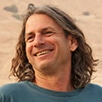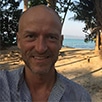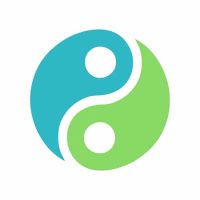Rebalance Acupuncture Edmonton Clinic
Rebalance Acupuncture Edmonton Clinic helps you achieve faster relief and lasting wellness by addressing both physical symptoms and their emotional root causes.
Balance Method Acupuncture restores harmony in your body, mind, and energy and delivers effective symptom relief. At the same time, Recall Healing can treat the subconscious root of your condition and resolve triggers that transform your life, habits, and behaviors.
Together, these holistic approaches create a personalized, transformative path to better health, balance, and well-being.
Effective & Holistic Edmonton Acupuncture Clinic
Sometimes, you need a quick and natural solution to relieve symptoms like pain, inflammation, or stress—without the side effects of medications. At other times, when you feel more stable, it may be the right moment to address the deeper root causes of your condition.
The first step in any healing journey is a proper diagnosis. Therfore, at Rebalance Acupuncture Edmonton, we conduct thorough diagnoses and offer valuable insights into the most effective ways to identify as well as treat the physical, energetic, subconscious, and lifestyle-related factors contributing to your condition.
Acupuncture and Diagnosis in edmonton
However, if you’ve tried acupuncture before without success, it may be due to an incomplete diagnosis, incorrect point selection, or an ineffective technique. When performed correctly, acupuncture can be a powerful and transformative therapy.
Addressing more than just the symptoms is essential for complex or chronic conditions. In addition to Chinese medicine, incorporating lifestyle changes, recognizing emotional patterns, and uncovering subconscious triggers are key to achieving lasting wellness. At Rebalance Acupuncture Edmonton, we believe that acupuncture should show immediate results in most chronic conditions.
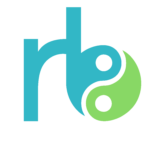
Our Services: Acupuncture & Recall Healing
Balance Method Acupuncture
Balance Method Acupuncture is practiced in the Edmonton clinic and is a highly effective style of acupuncture that often delivers faster and better results than standard acupuncture techniques.
Most patients notice significant improvement within the initial acupuncture treatment.
This method combines ancient wisdom with modern applications. It focuses on healing affected meridians by leveraging healthy ones. Furthermore, It introduces an expanded range of acupuncture points, precise diagnosis, and unique needling techniques for optimal results.
Thankfully, We offer direct billing with most insurance providers in our Edmonton acupuncture clinic for your convenience, making your treatments stress-free and accessible.
Balance Method Acupuncture
Balance Method Acupuncture is a highly effective style of acupuncture that often delivers faster and better results compared to standard acupuncture techniques.
Most patients notice significant improvement within the initial acupuncture treatment.
This method combines ancient wisdom with modern applications, focusing on healing affected meridians by leveraging healthy ones. It introduces an expanded range of acupuncture points, precise diagnosis, and unique needling techniques for optimal results.
For your convenience, we offer direct billing with most insurance providers, making your treatments stress-free and accessible.
Recall Healing in Edmonton
Recall Healing is a transformative approach that uses guided conversations to uncover critical events and traumas. This method raises awareness of the subconscious emotions underlying physical conditions, behaviors, and patterns.
By addressing the subconscious root causes, Recall Healing has shown profound results in fostering emotional healing, resolving deep-seated traumas, and achieving life-changing realizations.
Recall Healing consultations are available both online and in the Rebalance Acupuncture Edmonton clinic. These sessions help clarify the root causes of conditions and reveal connections between traumas and recurring patterns. In addition, it can provide a deeper understanding of relationships, personal issues, and behaviors.
Herbal Therapy & Supplements
Chinese Medicine herbal therapy utilizes ancient herbs and mineral formulas to address the root causes of various conditions, following the principles of Chinese Medicine. Each herbal treatment is personalized and prescribed after a thorough diagnosis, ensuring safety and minimal to no side effects.
TCM herbal therapy works synergistically with acupuncture, as both treatments stem from the same diagnostic framework, enhancing overall effectiveness.
Additionally, we offer a range of modern, natural, and high-quality supplements and vitamins at the clinic to support your wellness journey
Herbal Therapy in Edmonton
Chinese herbal therapy utilizes ancient herbs and mineral formulas to address the root causes of various conditions. Following the principles of Chinese Medicine, each herbal treatment is personalized and prescribed after a thorough diagnosis, therefore ensuring safety and minimal side effects.
TCM herbal therapy works synergistically with acupuncture, as both treatments stem from the same diagnostic framework, enhancing overall effectiveness.
Additionally, the Rebalance Acupuncture Edmonton clinic offers a range of modern, natural, high-quality supplements and vitamins to support your wellness journey.
Diagnosis in Acupuncture
Diagnosis is crucial to effective treatment in Chinese Medicine. In Western medicine, diagnosis typically focuses on identifying the condition.
However, in holistic medicine, we aim to uncover why the person developed this condition, addressing the root cause to provide personalized care.
Each individual and their condition requires a tailored approach to diagnosis and treatment. For example, a healthy person with back pain caused by one or two tight muscles may benefit most from Balance Method Acupuncture combined with specific stretching exercises. In this case, the diagnosis focuses on identifying the problematic muscles and the activities or lack of movement that caused the issue.
Diagnosis in acupuncture
The diagnostic process for another patient with a sore back, hips, shoulders, IBS, and anxiety becomes more comprehensive. As in the first case, it identifies the affected muscles and evaluates imbalances in organs and meridians according to Chinese Medicine principles. We use acupuncture to address both symptoms and root causes, complemented by prescribed herbs and nutritional guidance. In the Rebalance Acupuncture Edmonton clinic, we can use Recall Healing to address subconscious beliefs or traumas contributing to the chronic condition.
Chinese Medicine diagnoses incorporate an in-depth review of symptoms, physical examination, and pulse and tongue analysis. In contrast, Recall Healing diagnoses delve into significant life events and traumas, including patterns within the family tree, to uncover hidden emotional triggers.
Other Services at The Clinic
At our Edmonton clinic, we offer additional treatment methods to complement your healing journey, including electro-acupuncture, cupping, taping, and magnetic therapy.
In addition to these therapies, we provide personalized recommendations, such as nutrition advice, specific exercises, and lifestyle changes, tailored to each patient’s needs. Occasionally, a patient experiences a ‘wake-up call’ and feels ready to make significant changes in their life. In these cases, we support them by combining Recall Healing with ‘life coaching’ to address patterns, habits, and challenges in areas such as relationships, career, and overall physical, mental, and spiritual health
Services at The Edmonton Clinic
Our Acupuncture Clinic in Edmonton offers additional treatment methods, including electroacupuncture, cupping, taping, and magnetic therapy, to complement your healing journey.
In addition to these therapies, we provide personalized recommendations, such as nutrition advice, specific exercises, and lifestyle changes, tailored to each patient’s needs. Occasionally, a patient experiences a ‘wake-up call’ and feels ready to make significant changes in their life.
In these cases, we support them by combining Recall Healing with ‘life coaching’ to address patterns, habits, and challenges in relationships, careers, and overall physical, mental, and spiritual health.

Watch- rebalance acupuncture edmonton video

Conditions We Treat in Acupuncture Edmontont
- MIGRAINES & HEADACHES
- BACK PAIN & SCIATICA
- HOLISTIC CANCER CARE
- ANXIETY & PANIC ATTACK
- HEMORRHOIDS & FISSURES
- FERTILITY & WOMAN HEALTH
- CONSTIPATION & DIGESTION
- KNEE PAIN & HIP PAIN
- FIBROMYALGIA, FATIGUE
- THYROID BALANCE
- CARPAL TUNNEL SYNDROME
- CROHN'S & COLITIS
- SHOULDER & NECK PAIN
- ASTHMA TREATMENT
- TENNIS ELBOW & GOLF
- FACIAL PARALYSIS & BELL'S PALSY
- SPORTS INJURY & ATHLETES
- PMS, MENOPAUSE
- PLANTAR FASCIITIS
- PSORIASIS
- ECZEMA, ATOPIC DERMATITIS
- VERTIGO, DIZZINESS
- AUTO IMMUNE CONDITIONS
- ACNE AND SCARS
- FACIAL PARALYSIS
- LYME DISEASE
- INSOMNIA
- SLEEP APNEA, SNORING
- SPINE INJURY
- STRESS REDUCING
- IMMUNE SYSTEM BOOST
- JOINT PAIN- ARTHRITIS
- OSTEOARTHRITIS
- DEPRESSION
- ALLERGIES & SINUSITIS
- PTSD - POST TRAUMATIC DIS.
- REBALANCE YOURSELF
- BREAST CANCER
- CAR ACCIDENTS & WHIPLASH
- PSYCHOSOMATIC
How Many Acupuncture Treatments Do I Need?
In the following section, we will explore how many acupuncture treatments are typically needed for various conditions. The number of treatments required varies depending on the individual’s overall health and the severity or duration of the condition. However, chronic conditions that have persisted for a longer time may take more sessions to resolve, and certain medications can sometimes slow the rate of improvement. Treating the root cause often takes more time than simply addressing symptoms.
Acupuncture treatment
The following estimations are based on a healthy 40-year-old individual with no significant comorbidities. Since Balance Method Acupuncture delivers faster results than other styles, adjustments should be made when considering different acupuncture approaches. At the clinic, following the initial diagnosis, Dr. Ac. Shalev will provide a personalized and more precise treatment plan tailored to your unique needs.
How Fast Can Acupcunture Help Me?
- Intense Migraines: 12 acupuncture treatments with herbal therapy. Recall Healing is recommended for chronic cases.
- General Anxiety: 8 acupuncture treatments. For severe panic attacks, 15 acupuncture sessions. Recall Healing is highly recommended to address subconscious root causes.
- Stress: 1–2 acupuncture treatments as needed.
- Acute Back Pain: 2 acupuncture treatments in the first week; 5–6 acupuncture sessions in total.
- Chronic Back Pain: 8 acupuncture treatments.
- Sciatic Back Pain: 12 acupuncture treatments. Start with 2 sessions per week, reducing to once weekly or bi-weekly as symptoms improve.
- Random Pain/Inflammation: 1–3 acupuncture treatments as needed for gym injuries, overworking, or general inflammation.
- Hot Flashes/Menopause: 10 acupuncture treatments with herbal therapy.
- Acute Neck Pain: 2–3 acupuncture treatments.
- Chronic Neck Pain: 8 acupuncture treatments.
- Knee Pain: 6 acupuncture treatments.
- Carpal Tunnel Syndrome: 8 acupuncture treatments.
- Type 2 Diabetes: 1 acupuncture treatment weekly for 3–4 months, with changes to nutrition and exercise.
- Shoulder Pain: 8 acupuncture treatments. For severe injuries like ligament tears or frozen shoulder, 12–15 acupuncture sessions.
- Tennis Elbow: 8 acupuncture treatments with weekly sessions and Kinesio taping.
- Infertility: Weekly acupuncture treatments initially, then as needed (e.g., before ovulation). Herbal therapy and Recall Healing are recommended.
- IBS/Constipation: 10 acupuncture treatments, with nutrition guidance.
- Hemorrhoids: 10 acupuncture treatments with herbal cream for best results.
- Insomnia: 8 acupuncture treatments with herbal therapy.
- Bell’s Palsy: 2 acupuncture treatments per week for approximately 8 sessions.
- Cancer Care: Weekly acupuncture treatments as needed, with Recall Healing for subconscious healing.
- Fibromyalgia: Start with 2 acupuncture treatments weekly, reducing as symptoms improve. Typically, 10–15 acupuncture treatments are required. Recall Healing is effective for subconscious emotional triggers.

Acupuncture Pricing in Edmonton and Direct Billing
Initial Acupuncture
Your appointment includes an introduction, a TCM diagnosis, a personalized treatment plan, and an acupuncture treatment. This 60-minute session provides ample time to address all your concerns and questions with Dr. Ac. Elad Shalev.
We offer direct billing for acupuncture with most insurance providers to make your experience convenient and stress-free.
Recall Healing
Your Recall Healing consultation is available worldwide online or in person at our Edmonton clinic. To ensure the best results, please complete the comprehensive questionnaire at least 24 hours before your appointment. Note that Recall Healing consultations do not replace any medical treatments, including chemotherapy. Each session lasts 90 minutes.
Follow-up Acupuncture
Your session includes a brief assessment followed by a 45-minute acupuncture treatment. For your convenience, we offer direct billing with most insurance providers.
Five Recall Healing
Your package includes five Recall Healing consultations, available online or in the clinic.
Acupuncture packages
The three-session follow-up package is ideal for simple cases or for those trying acupuncture for the first time.
The ten-session follow-up package is perfect for chronic cases and offers great savings. It is valid for 12 months.
Direct Billing is available for
acupuncture treatments at Our Edmonton Clinic
- Packages are valid for one year from the date of purchase and are non-transferable.
- We offer a 10% discount for veterans and first responders.
- Please let us know at least 24 hours before your scheduled treatment if you need to cancel or reschedule.

Acupuncture Edmonton Clients Testimonials & Reviews
Trustindex verifies that the original source of the review is Google. Excellent place for your wellbeing.Trustindex verifies that the original source of the review is Google. Ever since I had injured my shoulder in August of 2024, I had many acupuncture treatments in Ontario, Saskatoon and Edmonton before I discovered Rebalance. The treatment I received from Dr. Shalev was hands down the very best. I say this because the acupuncture I received from him improved my shoulder mobility and reduced my pain significantly more than any of the other places I visited. I highly recommend this place before going anywhere else.Trustindex verifies that the original source of the review is Google. I saw great improvements after very first treatment.. had an excellent experience with Dr. Elad ShalevTrustindex verifies that the original source of the review is Google. Elad is knowledgable, compassionate and professional. He quickly found the root cause of my back pain, offered treatment and provided effective exercises and stretching to keep me active and pain free. His understanding of acupuncture in conjunction with recall therapy leads to great conversations if you’re willing (he is also excellent at knowing when to tell me to be quiet and relax instead though!) If you want to feel better I highly recommend trying rebalance acupuncture.Trustindex verifies that the original source of the review is Google. Treatment for ostioarthritis in the lumber spine and back injury. I can't say enough about Elad. He is knowledgeable and attentive. He understands exactly where to treat you with his excellent acupuncture teqniques. He keeps you relaxed while talking to you during treatment and gets you to understand the root cause of your condition. The Pain has been reduced significantly. Looking forward to my next treatment. Thank you Elad!Trustindex verifies that the original source of the review is Google. Excellent experience with Dr Shalev. He got to the root of my issue and the pain and inflammation decreased dramatically and immediately. He also treated a secondary issue I had of leg numbness and weakness from a back injury that occurred years ago. Strength and function of my leg and foot are better than it has been in years. My experience at Rebalance further confirms my belief in natural alternative medicine and that the drug and invasive surgical treatments are not always necessary. I highly recommend Rebalance and Dr Shalev.Trustindex verifies that the original source of the review is Google. Dr. Elad is highly recommended. His skillset goes beyond traditional acupuncture and he offers a very unique therapeutic serviceTrustindex verifies that the original source of the review is Google. What made my acupuncture experience with Elad so unique and effective was his multifaceted approach. He used his background knowledge and experience with recall healing to identify the emotional trauma/ cause behind my pain and condition. I found it really interesting that he was able to accurately pinpoint certain behavior and events that took place prior to my flareups. He used distal acupuncture (needles placed at different sites to the area of pain). After our first appointment I didn't just leave with relief from my sciatica pain but also with many valuable insights. Thank you Elad! 🙂Trustindex verifies that the original source of the review is Google. Dr. Elad Shalev is really good...I have been suffering with this shoulder and back pain for a month, been to chiro treatment but did not work. But accupuncture treatment made me feel better. I highly recommend Dr. Elad.Trustindex verifies that the original source of the review is Google. I have suffered from chronic pain at a level of 9 out of 10 for the past 13 years. And have experienced many different modalities of treatments to try and alleviate my symptoms, including other acupuncture practitioners. However, until I came to see Elad I had very little success in decreasing my pain. Upon seeing Elad i have experienced an extreme decrease in my pain symptoms. I have been working with him for about 2 years and through each treatment I notice a significant decrease in pain and I am almost pain free!!! This is amazing…I had forgotten what it was like to have a body that was not in pain. Thank you Elad for helping me achieve a pain free life once again
